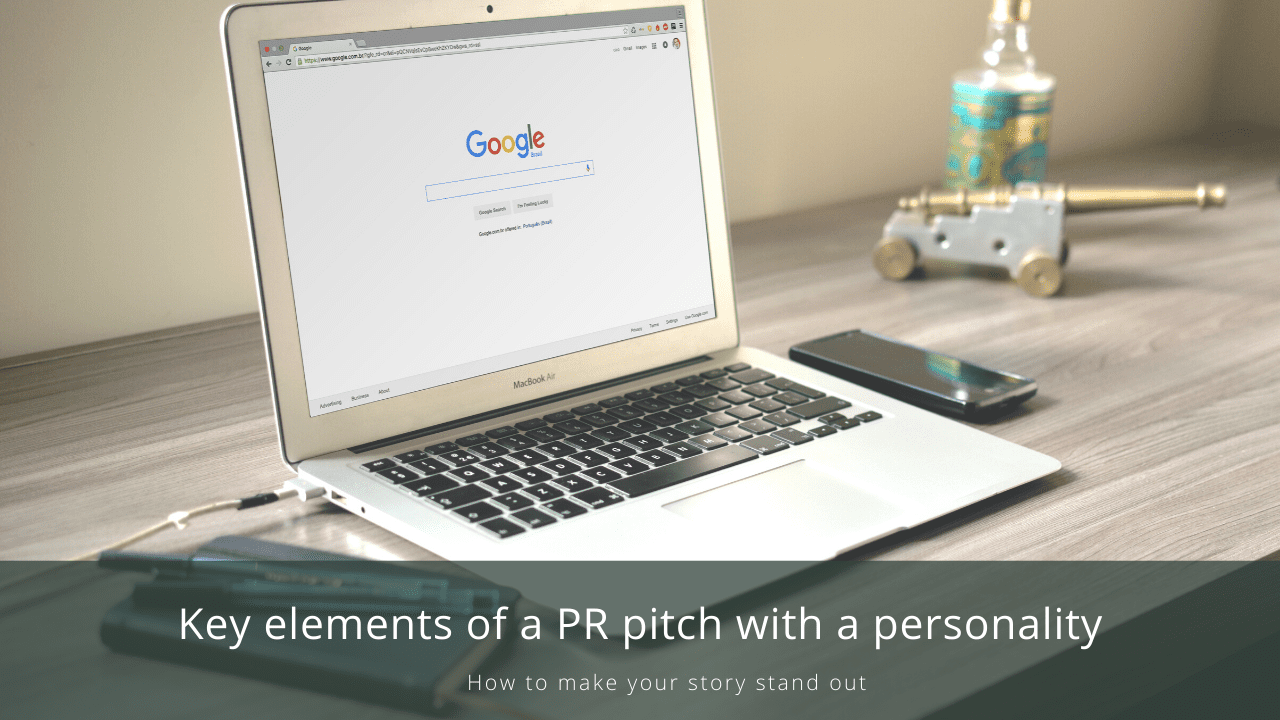A PR pitch is a fantastic opportunity to gain exposure using a journalist who covers your industry. Unlike a press release, a pitch tends to be less formal and more personalized. A solid pitch can lead to a beneficial long term media relationship which can have profound benefits for a brand or business.
However, with most top-tier publishers getting between 50 and 500 pitches a week, it can be challenging to make your pitch stand out from the crowd. Cutting through the noise and creating a pitch with personality can be difficult but requires a simple approach to be successful.
Keep it short and engaging

Long and drawn out text that struggles to find a point is easily disposable in an industry with so much volume. Within the first few sentences, the person you have contacted should understand what it is you’re saying and why it is important. Being clear and concise is the best approach; it signals a sense of honesty that doesn’t feature hard sell tactics. More importantly, industry professionals do not have the time to read every 1500+ word pitch in their inbox. Keeping it short yet engaging will improve the prospects of the pitch.
Challenging yourself to lower your word count means that you’ll stand out from the crowd while creating engaging content. Simple but punchy subject lines help draw the reader in. A concise message in the opening paragraph helps give the pitch purpose and will increase the likelihood of publication.
The most significant pitfall of most PR pitches is the lack of customization and personalization. Too many people send out blanket emails in hopes of response without conducting any research on the recipients. This impersonal approach is rarely successful and can harm PR relations before they have even begun.
Social media is a powerful tool and can help you to research potential journalistic targets. It will help you learn about them and their interests before attempting a cold pitch. Reading their latest blog posts or checking their LinkedIn connections can help build rapport later on. With this information, you can make your message topical and relevant to the reader. This approach will get their attention for a few vital seconds. Showing them, you have done your homework and want to build a longer-term partnership. Before pressing send, you can reach out to a journalist on social media and share their content as a symbol of goodwill and will help warm the lead.
We talk about why speaking like a human is important for brands to be able to connect with the potential and existing customers.
Contacting an individual is far more likely to reap a reward than sending a pitch to a generic mailing list of a large organization. Often these emails end up in the trash bin without anyone reading them. Targeting a person who covers your beat will significantly improve your chances of success. Conversely, spamming a journalist with irrelevant pitches may get you blacklisted which will end any potential of a working relationship.
Add value
Too often pitches include headings that take a clickbait approach and subject lines that belong in the spam folder. Your pitch must add value to the reader while avoiding an over-the-top sales approach.
It is essential to provide the journalist with information that could genuinely help improve their beat. Highlight to them how your pitch is going to attract interest and traffic. You can also look to take a broader approach and provide industry-level data by utilizing robust statistics and references that can bear scrutiny. Ask yourself this, if a PR pitch isn’t news to the journalist, then why would it be newsworthy for their readers?
Understand the audience

Creating pitches that reflect the work of the journalist is essential. By using a personalized approach, you can gain an understanding of a writer’s style and who their audience is. This gives you crucial insight into the type of content that they are likely to promote and publish.
Consider whether the pitch will resonate with their audience. If so, it is far more likely to gain traction and be sent for publication. After all, journalists continually seek to satisfy and grow their audience. Understanding a journalist’s readers means that your PR pitch will reach a relevant audience. This has a knock-on effect for your brand, which will help improve the popularity of your business in the long run.
We explore how technology is making PR relevant for startups.
The story has to matter to a journalist’s readers. If it doesn’t, then you have most likely contacted the wrong journalist. Head back to the drawing board, spend more time researching and personalizing your approach.
Do the groundwork
Ultimately the key elements of a great PR pitch are developed around putting in the groundwork to try and create a long-term partnership. Make sure to dive below surface level, take the time to research the journalist, and understand who you are approaching. The most successful pitches are highly personalized and seek to avoid a quantity over quality approach.
If you are curious to learn more about public relations or want to speak to a SYNC consultant about starting your brand’s PR journey, contact us at hello@syncpr.co
This article has been updated on 11 June 2020

